When a tool becomes a medium—art made from pencils
One way to cultivate creativity is to make art from the mundane. There is tremendous freedom in experimenting with a range of common everyday objects without any preconceived notions. Simply handle the media and reflect on, and then play up, its inherent characteristics. This month’s medium is pencils.
What do you think of when you think of a pencil? A child’s toy? A test-takers’ companion? A carpenter’s tool? An artist’s instrument? The pencil’s materiality is as distinct as its functionality. Do you first think of a pencil’s sleek hexagonal surface or its sharp point? Do you think of its wood or its graphite? Colored or black lead? All of these characteristics inspire artists when they shift their focus from making art with a pencil, to making art from a pencil. You will never look at pencils the same way again.
- Inspired by sea urchin’s colors and forms, Jennifer Maestre creates prickly pencil sculptures that both draw in and repel viewers.
- Studio Markunpoika glued and lathed bundles of pencils. This symmetrical carving process creates vases where the graphite and pigment bleed through in captivating geometric patterns.
- Melding the geometric and the organic, Jessica Drenk’s Implements series celebrates the materiality of her medium. She previously captivated us with her toilet paper sculptures.
- Lionel Bawden offers his own twist on the carving of bundled pencils with vibrant colored pencil sculptures that evoke landscapes and the human form.
- Guided by his recycling ethos, Dalton Ghetti takes pencils from the garbage and the gutter and elevates them into art, oftentimes celebrating the discarded and forgotten.
- A master of the miniature, Salavat Fidai creates intricate carvings, many of heroes and cartoon characters, from the point of the pencil.
- Viewing pencils as hexagonal tubes, George Hart creates geometric constructions with a fascinating three-dimensional lattice.
- Tara Donovan’s pencil landscape echoes the fields of visual activity she created with her plastic cup installation and plastic straw installation.
- Frederico Uribe uses colored pencils like building blocks to create sculptures that demand a second look.
- Luke Newton juxtaposes a child’s colored pencils with gun and rifle imagery as a protest to the senseless slaughter of the all-to-common school shooting
- RLR Advertising created a campaign that used a colored pencil gorilla to symbolize the educational and expressive atmosphere of the Los Angeles Zoo.
My sculptures were originally inspired by the form and function of the sea urchin. The spines of the urchin, so dangerous yet beautiful, serve as an explicit warning against contact. The alluring texture of the spines draws the touch in spite of the possible consequences. The tension unveiled, we feel push and pull, desire and repulsion. The sections of pencils present aspects of sharp and smooth for two very different textural and aesthetic experiences. Paradox and surprise are integral in my choice of materials. Quantities of industrially manufactured objects are used to create flexible forms reminiscent of the organic shapes of animals and nature. Pencils are common objects, here, these anonymous objects become the structure. There is true a fragility to the sometimes brutal aspect of the sculptures, vulnerability that is belied by the fearsome texture.
— Jennifer Maestre, from her artist statement
Pencils are utilized when giving form to our thoughts, illustrating our wishes and ideas. They are inseparably fused with craft and arts, representing diverse relationships between artist and their creations. Pencils are extensions of our minds which enable us to transmit information through different mediums and time, collecting knowledge and creating it. “Amalgamated” is a collection which explores the relationship of a mass produced ‘tool’ and its individual purpose. The beauty of the pencil as an object seems to go unnoticed if utilised only for their primary purpose. “Amalgamated” is a visual and tactile investigation by using pencils as a raw material. This holistic principle has been the fundament for creating this set of vases; let the pencils become a thing themselves.
— Studio Markunpoika in the Netherlands, from their web site
The sculptures in the Implements series are created by gluing thousands of pencils together and then sanding the outside of each form. In doing so, each piece exhibits a contrast between man-made geometry on the inside, and an outside evocative of natural shapes and textures. Interior and exterior have been reversed: inside the sculpture you see the outside of each pencil, while the interior of the pencils is revealed on the exterior surface of the piece.
— Jessica Drenk, from her website
As a sculptor of constructive geometric forms, my work deals with patterns and relationships derived from classical ideals of balance and symmetry. Mathematical yet organic, these abstract forms invite the viewer to partake of the geometric aesthetic… For some viewers, part of the interest lies in the form of the interior. The four hexagonal tubes are hollow, so the sculpture as a whole is hollow. But, what shape is its cavity? What would someone on the inside see? To the mathematician, the answer is “the rhombic dodecahedron,” a geometric solid bounded by twelve rhombuses.
— George Hart, from his web site
The color pencil, a simple utilitarian object but with direct references to creation and childhood, becomes the material of my paintings and sculptures. With an embroidery-like technique of studding, I have created art works that depict my emotional landscape and force the viewer to re-envision how the pencil and the creation process are perceived.
— Fredrico Urbine, in an interview with ARTE ECOLOGICO
Share your links to other pencil-based art and I will add them to the list. Or, add to the discussion by sharing images of your students’ pencil-based art explorations.
NOTE: As the teacher, you will need to consider the benefits of when you share works by established artists. When shown early in the process they can get the creative juices flowing, but they can also lead to self-censoring. Remember, the goal is not to create portfolio-worthy pieces, though that may happen. The goal is to practice thinking expansively and to become more artistically fluent, agile, and responsive.
Please share others who create art made from pencils.

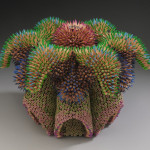
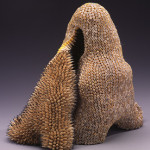
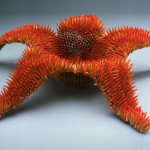
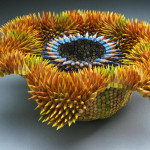
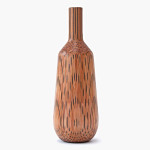
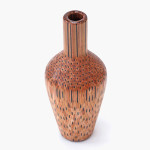
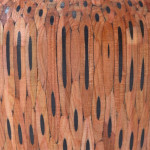
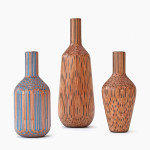
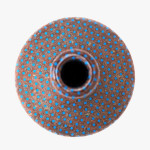

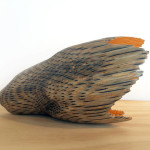

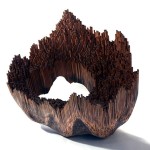
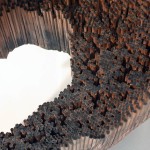
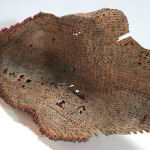

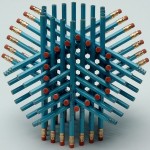
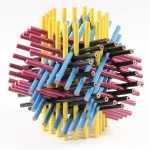
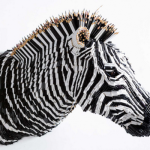
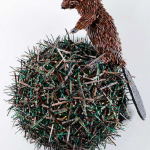
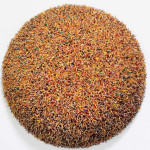
These are inherently fascinating. I have created pencil art for several years now in Yuma AZ